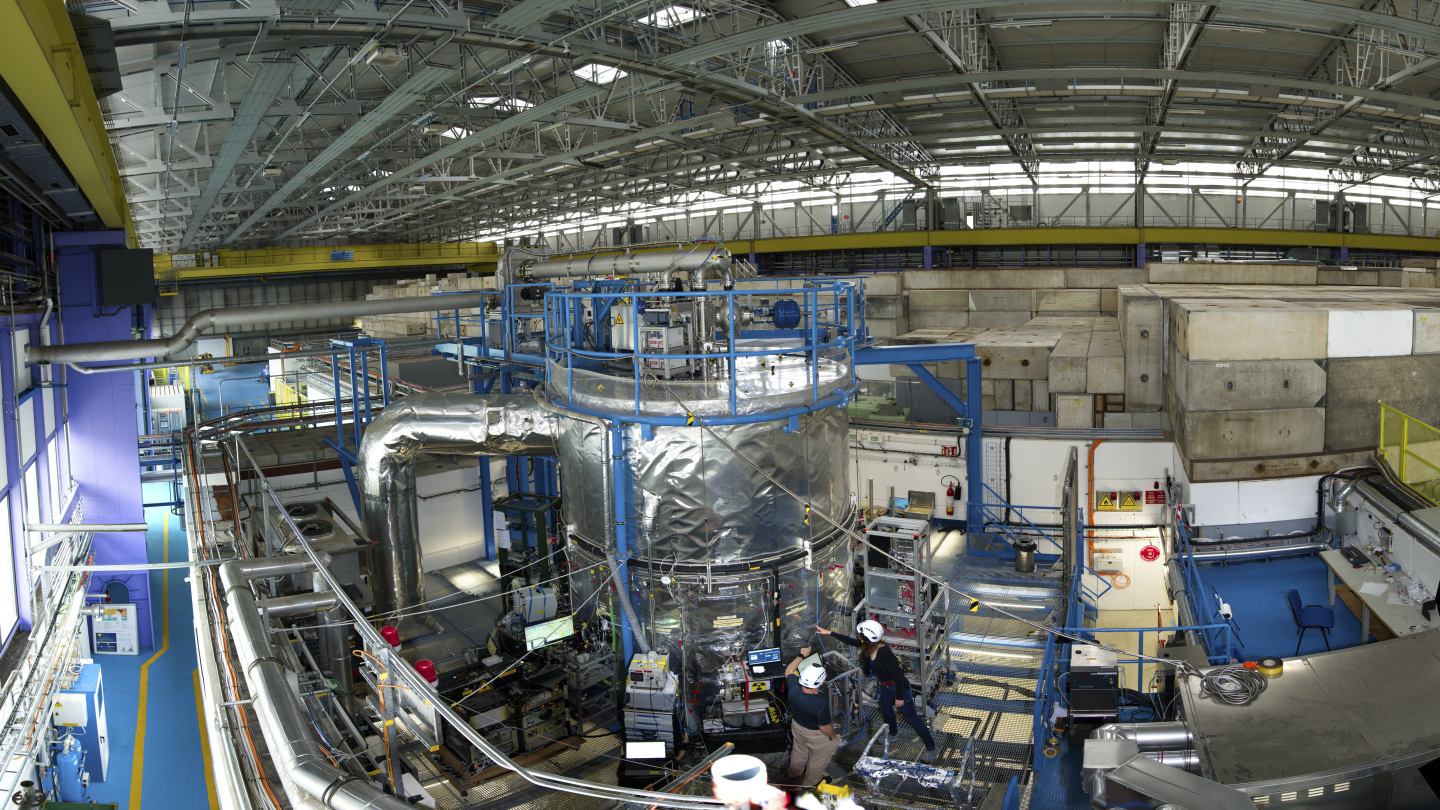In a paper published today in the journal Nature, the CLOUD collaboration at CERN reveals a new source of atmospheric aerosol particles that could help scientists to refine climate models.
Aerosols are microscopic particles suspended in the atmosphere that arise from both natural sources and human activities. They play an important role in Earth’s climate system because they seed clouds and influence their reflectivity and coverage. Most aerosols arise from the spontaneous condensation of molecules that are present in the atmosphere only in minute concentrations. However, the vapours responsible for their formation are not well understood, particularly in the remote upper troposphere.
The CLOUD (Cosmics Leaving Outdoor Droplets) experiment at CERN is designed to investigate the formation and growth of atmospheric aerosol particles in a controlled laboratory environment. CLOUD comprises a 26 m3 ultra-clean chamber and a suite of advanced instruments that continuously analyse its contents. The chamber contains a precisely selected mixture of gases under atmospheric conditions, into which secondary beams of charged pions are fired from CERN’s Proton Synchrotron to mimic the influence of galactic cosmic rays.
“High concentrations of aerosol particles have been observed high over the Amazon rainforest for the past twenty years, but their source has remained a puzzle until now,” says CLOUD spokesperson Jasper Kirkby. “Our latest study shows that the source is isoprene emitted by the rainforest and lofted in deep convective clouds to high altitudes, where it is oxidised to form highly condensable vapours. Isoprene represents a vast source of biogenic particles in both the present-day and pre-industrial atmospheres that is currently missing in atmospheric chemistry and climate models.”
Isoprene is a hydrocarbon containing five carbon atoms and eight hydrogen atoms. It is emitted by broad-leaved trees and other vegetation and is the most abundant non-methane hydrocarbon released into the atmosphere. Until now, isoprene’s ability to form new particles has been considered negligible.
The CLOUD results change this picture. By studying the reaction of hydroxyl radicals with isoprene at upper tropospheric temperatures of −30 °C and −50 °C, the collaboration discovered that isoprene oxidation products form copious particles at ambient isoprene concentrations. This new source of aerosol particles does not require any additional vapours. However, when minute concentrations of sulphuric acid or iodine oxoacids were introduced into the CLOUD chamber, a 100-fold increase in the aerosol formation rate was observed. Although sulphuric acid derives mainly from anthropogenic sulphur dioxide emissions, the acid concentrations used in CLOUD can also arise from natural sources.
In addition, the team found that isoprene oxidation products drive rapid growth of particles to sizes at which they can seed clouds and influence the climate – a behaviour that persists in the presence of nitrogen oxides produced by lightning at upper-tropospheric concentrations. After continued growth and descent to lower altitudes, these particles may provide a globally important source for seeding shallow continental and marine clouds, which influence Earth’s radiative balance (the amount of incoming solar radiation compared to outgoing longwave radiation).
“This new source of biogenic particles in the upper troposphere may impact estimates of Earth's climate sensitivity, since it implies that more aerosol particles were produced in the pristine pre-industrial atmosphere than previously thought,” adds Kirkby. “However, until our findings have been evaluated in global climate models, it’s not possible to quantify the effect.”
The CLOUD findings are consistent with aircraft observations over the Amazon, as reported in an accompanying paper in the same issue of Nature. Together, the two papers provide a compelling picture of the importance of isoprene-driven aerosol formation and its relevance for the atmosphere.
Since it began operation in 2009, the CLOUD experiment has unearthed several mechanisms by which aerosol particles form and grow in different regions of Earth’s atmosphere.
“In addition to helping climate researchers to understand the critical role of aerosols in Earth’s climate, the new CLOUD result demonstrates the rich diversity of CERN’s scientific programme and the power of accelerator-based science to address societal challenges,” says CERN Director for Research and Computing, Joachim Mnich.
Isoprene from forests is efficiently transported at night by deep convective clouds into the upper troposphere. During daylight, the isoprene that has accumulated overnight, together with daytime-convected isoprene, reacts with hydroxyl radicals and NOx from lightning to produce oxygenated isoprene organic molecules. These combine with trace amounts of acids to produce high particle concentrations at temperatures below −30 °C. The newly formed particles grow rapidly over several hours and days while following the descending air masses. This mechanism may provide an extensive source of cloud condensation nuclei for shallow continental and marine clouds, which influence Earth’s radiative balance.
Further material:
Infographic
Photo collection
Video collection

